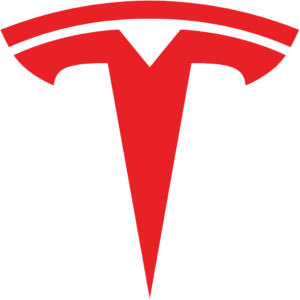Nikola/GM Update ….. Liquid Cooled Charging Cables ….. Wisconsin’s EV Encouragement ….. Amazon’s EU Electric Delivery Van Purchase
**** Here’s a brief update on the Nikola/GM fiasco I wrote about recently. The effect on the investment world of Hindenburg Research’s (HR) scathing report alleging Nikola’s fraud and misrepresentations has been polarizing. Electric vehicle cognoscenti and investors already knew a lot of the HR report’s content, were overjoyed to find almost everything organized by HR in one coherent well-documented narrative, and fervently hope that Trevor Milton and his crew of disingenuous sycophants spend significant time in the clink for their deceptions.
Many Wall Street analysts and followers who know nothing about electric vehicles and hydrogen fuel cell (HFC) technology wonder what all the Nikola fuss is about. All they know is if they hear or see those two terms, they will invest in them because aren’t those two subjects the latest hot thing? GM, in the catbird seat because of the lopsidedly favorable deal it negotiated with a desperate Nikola (if only Nikola was an honest company) is keeping silent, only telling the press they stand by their original vetting of their deal with Nikola and how wonderful the deal is for GM. For knowledgeable industry followers, aware of all GM has on its plate and how far behind Tesla GM already is, all they can wonder is how Mary Barra and GM could have ever got into this deal and why, and how many washcloths it will take to get the mud off GM’s face as Nikola and its deal with GM heads South.
Turns out the “marriage broker” between GM and Nikola, Steve Girsky, was once GM’s vice-chairman, and was the managing partner at VectoIQ – the company that brought Nikola under its wing and went public under a Special Company Acquisition (SPAC) deal (folding VectoIQ under Nikola). Girsky, of course, adamantly defends the GM/Nikola deal, saying that: “….’an army’ conducted due diligence on…[Nikola].”
On September 17, 2020, armed with the information in the Hindenburg Research report, one of the two law firms I mentioned in my previous article on this subject, the Rosen Law Firm, officially filed a class action suit against Nikola, reportedly including Steve Girsky (but not GM). As the first filer, they now have the lead in a case where many other firms and individuals will pile on, given the strength of the evidence in the Hindenburg research report, other reports documented on Twitter by former Nikola employees, and additional information that has or will come to light. Their case will be further supported by Nikola’s admission that its first truck, the 2016 Nikola One, was advertised as a working vehicle but in fact was a fake – a “pusher” that was not operable on its own. The video Nikola produced to show it being driven on a highway was a fake, as the truck had been towed to the top of a long downhill grade and rolled down the grade so it could be filmed as if it was under its own power.
Nikola is doing everything it can to keep its stock price up (as of 9/18/20 $34.19). Anyone involved in the deal is under lockdown until the agreement deadline of December 3, 2020, and thus cannot sell any stock during this period. After December 3rd, there is a distinct possibility that Bosch and Iveco will bail out of their arrangement as suppliers to Nikola, as other companies such as Worthington Industries and Ryder already have. And when they sell out, they want the highest possible Nikola stock price. This is a great incentive for them to remain quiet about any problems with Nikola and/or Trevor Milton.
Meanwhile the Rosen class action suit will gain further support. At least two other firms have also filed class action suits against Nikola as of 9/19. In due time both the US Department of Justice and SEC will weigh in with the results of their investigations into Nikola. Prudent investors would be well advised to wait until the dust settles on this affair. This story is better than the old soap opera “As the World Turns”.
**** Many Tesla owners have found that when charging their vehicles that the charging cable plug can sometimes get really hot, due to the high current flowing through it.
This will become a bigger problem as charging rates increase and Tesla’s overall battery system voltage remains in the 375 to 400 volt range. Currently Tesla’s 250 kW V3 Superchargers have liquid cooled charging cables. But Tesla just filed for a patent on a new more sophisticated liquid cooled charging cable design, designed no doubt to handle the very high charging demands of its Semi trucks due out shortly.
Electric vehicles that have higher battery system voltages like Porsche’s Taycan at 800 volts and Lucid’s vehicles with a 924 volt system have great reduced current flow in their charging cables as watts are simply volts times amps. The higher the voltage, the lower the ampere flow for a given number of watts required to charge a vehicle’s battery.
These liquid cooled charging cables are yet another example of Tesla’s innovation and attention to every detail that could make a Tesla more efficient and its owner happier.
**** Good news from Wisconsin, and a model for other US states. Wisconsin’s Public Service Commission is strongly considering an order that would mandate that the State’s largest five utilities implement a program to replace their entire fleets of ICE powered vehicles with electric vehicles. In addition, roughly 120 smaller utilities in the state would be encouraged — but not initially mandated — to follow this new EV mandate.
Every citizen should be posing hard questions to their local authorities as to why they are not converting their police and town maintenance fleets to electric vehicles, particularly in view of the tremendous savings in operating costs that many organizations have demonstrated. Here’s just one example of a Connecticut police department that is benefitting from the use (and savings) of a Tesla Model 3.
**** I have written before about Amazon’s investment in Rivian and Jeff Bezos’ impatience to start receiving the first of its 100,000 electric delivery vans it has on order from Rivian. Even though no such Rivian vans are in sight, Amazon just increased its stake in Rivian with a further undisclosed investment amount.
In Europe, it’s a different matter as Amazon just ordered 1,800 electric delivery vans from Mercedes – 1,200 eSprinters, and 600 much smaller e-Vito vans. These vans will be used in the European Union and the UK. Mercedes started production of its eSprinter in late 2019 at its Dusseldorf Germany plant.
Bezos is under pressure to reduce Amazon’s shipping costs. Converting from ICE powered delivery vehicles to electric delivery vehicles will be a huge contributor to cutting Amazon’s delivery fleet operating costs. If Rivian continues to drag its feet on its delivery van for Amazon, could some Mercedes eSprinters soon find their way to Amazon in the US? Bezos is not a man to be kept waiting, especially by a company in which Amazon has invested hundreds of million dollars.
Image courtesy of Pixabay
Your feedback in the form of comments or suggestions are welcome in the comment window. Thank you for following my blogs on this site and for participating in my blogging community.




